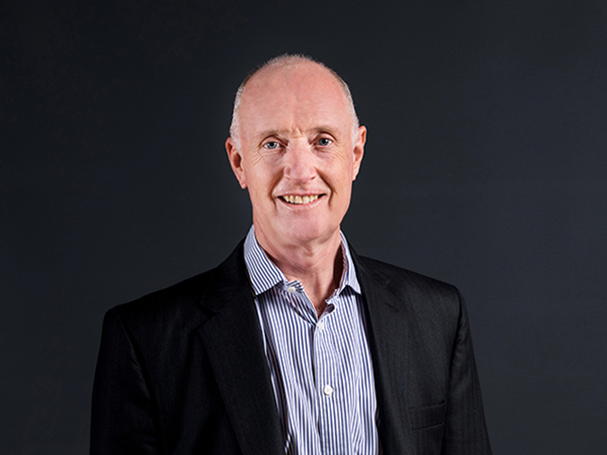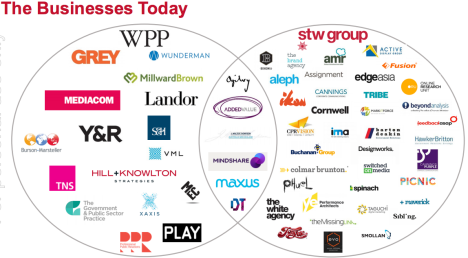WPP AUNZ chair Robert Mactier on what next for the group post takeover
Following yesterday’s vote from minority shareholders in favour of WPP plc’s takeover bid for the remaining shares in WPP AUNZ, the resounding question is once the scheme is completed is ‘what’s next?’.
Industry leaders have speculated to Mumbrella that with the dissolution of the board, Jens Monsees’ role as WPP AUNZ CEO and managing director will be drawn into question. No outposts of WPP plc have CEOs, but instead have country managers, and transitioning Monsees into a country manager seems unlikely.
Sources believe that Jens will leave the business, and instead a member of the WPP team from London will be ‘parachuted in’, to take up a country manager role.

Robert Mactier
Speaking to Mumbrella, chair of the WPP AUNZ board Robert Mactier said no decisions about the senior leadership team have been set in stone and reiterated that the business under Monsees’ leadership has achieved great success in financially turning its financial situation around against the backdrop of COVID-19, and that recent changes made under the group’s transformation strategy have had the full support of WPP plc.
“I think that’s part and parcel of whether they want to make any changes to the governance and management structure going forward and the role of any of our senior leaders will be based upon that and what skillsets they want, and if there is change, whether that suits our people,” Mactier said.
“I think we should recognise that there have been a lot of changes made locally as part of the transformation program including bringing together the campus models, where you have much more collaboration and much more sharing of resources between the brands.
“All those changes have been made with the full knowledge and support of WPP as our major controlling shareholder for the last four years, so it’s not as though they’ve come in and bought something new and were going to want to change stuff automatically because they’ve been part of that journey going forward.”
The opinions of the industry differ slightly, some leaders have speculated to Mumbrella that the internal structures of WPP AUNZ will slowly be unwound, with the group’s finance, human resources and IT division dissolved to make way for each agency’s teams in the same field.
The agencies themselves draw questions, particularly now that many have gone through significant leadership changes in the last two years.
The resounding thought is that the local outpost of WPP will somewhat resemble its structure prior to its merger with STW and agencies’ primary reporting lines will change back to their own regional and global bases from an obligation to a common, local P&L.
In doing so, WPP will push the local agencies to ‘stand on their own two feet’ and become the major market players they once were. One source said to Mumbrella that the agencies need to be made ‘enemies’ of each other once more, pointing to the healthy competition between Omnicom’s agency brands.
Ogilvy Australia, which recently lost long-standing CEO David Fox to the agency’s chief executive post in the Middle East and Africa, is believed to be the brand’s fourth biggest office in the world. Insiders tell Mumbrella that the financial structure of WPP AUNZ as it stands now leaves Ogilvy, and other high-performing agencies in the group such as AKQA, negatively impacted by underperforming businesses, inhibiting their ability to retain talent through financial means.
Talent is also thought to be a critical factor in the next phase of the local WPP. After losing a host of senior talent in the last two years, retaining and attracting talent into the business will be critical for fighting off the rise of innovative and nimble independents.
Mactier said that what happens to the structure of the group is ‘entirely a WPP decision’ and that the local leaders will be working to smooth the transition.
“I spoke to WPP last night and we talked about as their plans unfold we’ll do what we can to ensure a seamless transition,” he said.
“We’ve been going through a transformation program, which has had the full support of WPP and is consistent with the WPP’s own transformation strategy… and so we’ve changed a lot in the way we’ve structured the group locally and whether there will be any change or not from the current structure is entirely a WPP decision.”

The STW and WPP brands as they stood in 2015
This final merger is certainly an end of an era, and industry leaders remember that with full global ownership comes the disappearance of the ‘flare’ that the locally owned and run STW once had.
Throughout the continuation of the WPP and STW merger that has taken place in the last several years, many of those STW brands are no longer in market.
One industry exec points to AKQA, which also has one of its largest offices in Australia, as an example of the disappearing presence of STW. The business is ‘basically DT’, which was rebranded to AKQA in 2017. Since then the agency has consumed STW brands including Tongue, Switched On and IKON Communications.
So the question stands, once the takeover is complete, where do brands such as Cannings and Spinach sit in the group?
“So it’s still quite a significant number of businesses that are local brands and that makes Australia a slightly different market,” Mactier said.
“WPP made the point overnight that Australia is their fifth biggest market, so it’s a really important market for them and they acknowledge the differences in our business make up down here.
“But once again, there’s been no decisions made about merging brands and had they made any material decisions about how they’re going to the business or govern the business they would have had to disclose those in the scheme booklet.”

